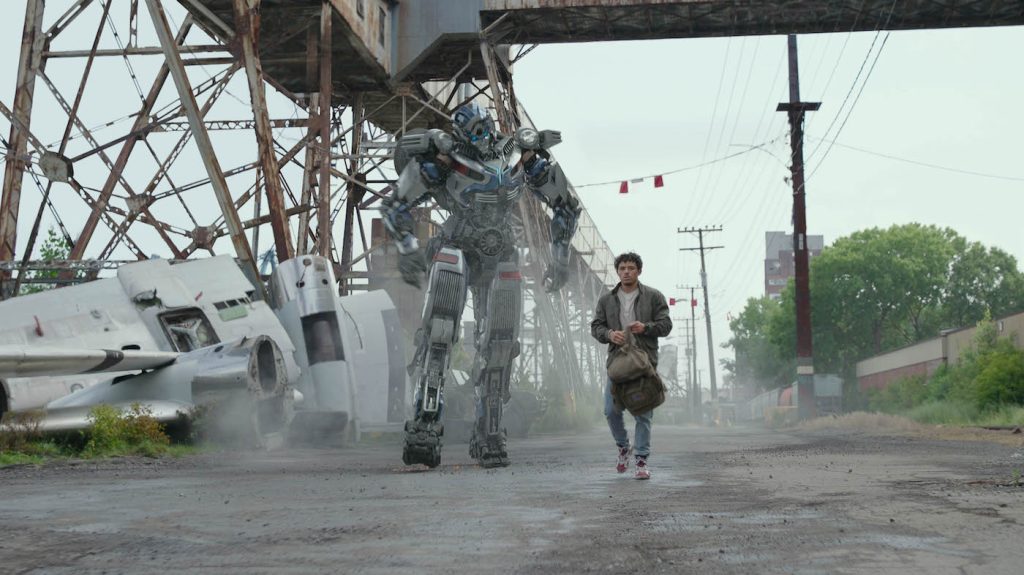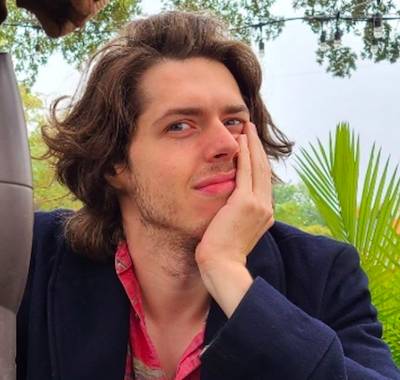“Transformers: Rise of the Beasts” Composer Jongnic Bontemps Lets the Emotion Ride
Paramount’s Transformers franchise was conceived by Michael Bay as a maximalist epic of crunching, crashing, morphing metal beasts and the humans caught in the metallic whirlwind of their drama. With director Steven Caple Jr. in the director’s chair for Transformers: Rise of the Beasts, the series now strives to balance the character and the spectacle in a fashion similar to director Travis Knight’s spinoff film Bumblebee, which was set in the 1980s and a little bit earthier and more human-centered. Caple Jr.’s new film, which soaks up the sights, sounds, and styles of the 1990s, benefits mightily from the adventurous yet elegant score from composer Jongnic Bontemps.
Rise of the Beasts follows a veteran, Noah Diaz (Anthony Romas), and an archeological researcher, Elena Wallace (Dominique Fishback), as they find themselves—you guessed it—caught up in the metallic whirlwind with the Autobots. Rise of the Beasts also introduces a new race of robots to the franchise, the beastly bots known as the Maximals, to defeat a planet-destroying villain, the Terrorcon robot Unicron (voiced by Colman Domingo).
Combining familiar franchise elements with brand-new characters, settings, and sounds, Bontemps manages to thread in themes that respect the franchise’s history while also looking ahead to its future. We spoke with Bontemps about his score, which runs for over an hour and 45 minutes long, and how he crafted something simultaneously intimate and epic.
The track “The Final Battle Begins” is especially great. For the score, did you want the level of sonic variety that the “Final Battle” contains?
I think the sense of variety came from the film and the journey the characters go on. We start in Brooklyn, so the score has a certain sound in Brooklyn, then we go to Peru. So, the score contains certain sounds from that environment. And then, in the third act, in an otherworldly and more synthetic environment, the score pulls more from synths. Really, it was about trying to have the score go on the same journey as our characters, but all the while establishing themes. Melodies that we associate with the Maximals or the Autobots or Noah and Mirage (voiced by Pete Davison) that go on that journey with them. By the time we get the final battle, those themes are paying off. You already have a relationship with them.
You have some large brass sections to face off against the more electronic elements.
We spend a lot of time with that. It’s a Transformers movie, so you can’t have a Transformers score without some brass. Steve Jablonsky, who did the previous scores, leaned into that and created amazing melodies that you hear on brass that just provide this nobility. I wanted to see how I can take that idea and do something different. I was told our brass section was actually one of the largest brass sections recorded in LA. We had 25 brass players, 12 horns, six trombones, three bass trombones, two cimbasso tubas, and one tuba.
Was it ever too much?
Sometimes we thinned the herd, as we called it, and took some players out. For some of the more delicate moments, we had to make it a smaller section. But having all those players allowed us to have that flexibility of going from super large and epic to potentially something that’s a bit smaller when we need to have that more intimate sound.
The franchise is known for going big in every way, and that includes the score. Did you have conversations with the sound effects team about what would or wouldn’t work best, musically, alongside effects?
That was something I had to learn. I had been on this project for a year and a half. One of the reasons was because, look, I haven’t done a film of this size. Well, no African American composer has done a film of this size. So, the producers were like,” Well, we’re gonna give this guy a shot. Let’s get him on early, and let’s hear things early. This way, if there are any issues, we can direct him early,” and that’s what happened.
What exactly happened?
The first iteration of the score that I did early on had more of a sound effect, sound design, and a synth feel to it. While it worked, what was missing was some of the emotion that we needed. It was also starting to clash a lot with the sound effects. A robot would move an arm or whatever, and it was getting hard to discern between the two. A lesson I learned early is that the score, first and foremost, has to be musical so that this way people can discern what’s a sound effect and what’s music.

How’d you balance the two?
Harmony and melody and rhythmical ideas that are short but that people can latch onto quickly. I leaned into being musical. You know, a lot of the final sound effects don’t really flow in until almost the end of the process. Toward the end, as both the animation was finalizing and the sound effects were finalizing, we would deliver our music in stems so that the final dubbing mixer has a lot of control over what to pull down and what to bring up, right? Is this gonna be a sound effect moment? Is this gonna be a music moment? There was a lot of that massaging that would happen on the dub stage in the final throes of the process. Some of the rhythms that I put in we had to take out because they were clashing with the rhythm of a sound effect.
For example?
When our Autobots first meet Noah, they come into a space where there were all these transformations happening. During the transformation sequences, we actually ended up pulling back some of the drums that I had in the score. So, this way, the transformation could actually become the rhythm of the score, and then the drums would come back in after the transformation.
I want to jump back in your past because it’s different from most composers.
And it’s not straight (Laughs).
(Laughs) You worked in Silicon Valley, where I imagined you developed some delegating skills and other unique strengths. How did that experience shape you as a composer and help you communicate on a movie of this scale?
You are absolutely correct. Honestly, all of the skills that I learned in Silicon Valley of leading a team, taking requirements from the business, and turning that into a set of instructions and a plan to lead the development team to get it done? Those are all things that I learned from Silicon Valley. Also, how to manage the client, right? I mean, a lot of this is you are being tasked to do something that someone else doesn’t know how to do. You have to give them the confidence that you can get it done, but listen to their concerns, understand their vision, and then implement it. All of those skills from my software background played directly into doing this project and other projects.
It helps you on the practical side.
I think that’s what makes being a film composer interesting in that it’s not just about the music; it’s about getting it done. I wanna say that we are not artists; we are artisans. We create art for a purpose. We create art for someone else’s vision. Of course, we put our own voice in it as well, but that’s not necessarily the overriding voice, right? The overriding voice is the project. So, that’s why we are artisans, and that also means you have to have a process and, hopefully, a good client-facing manner.
Transformers: Rise of the Beasts is now playing in theaters.
For more on Transformers: Rise of the Beasts, check out these stories:
“Transformers: Rise of the Beasts” Ciara Whaley on Recreating That Strong 90s Style
Meet the Maximals in New “Transformers: Rise of the Beasts” Teaser
Featured image: ARCEE and WHEELJACK in “TRANSFORMERS: RISE OF THE BEASTS.” Courtesy Paramount Pictures.



